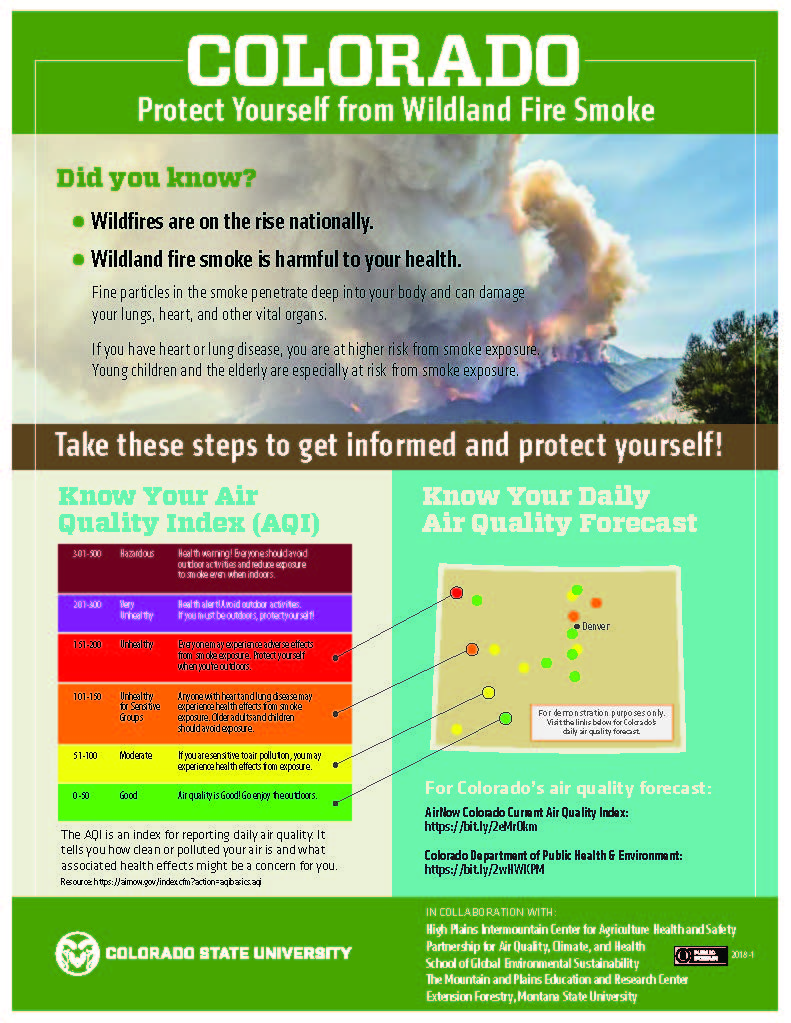Anita Pena, associate professor in the Department of Economics in the College of Liberal Arts, and Christian L’Orange, research associate in CSU’s Energy Institute, presented their research about field sanitation and air pollution at the High Plains Intermountain Center for Agricultural Health and Safety’s first Research Day Sept. 6 at the Lory Student Center. The event shared the center’s work in promoting health and safety within the agriculture, forestry and fishing industries.
Sanitation for farmworkers

Pena analyzed farmworker sanitation in the United States to determine if regulatory standards increased access to potable water, toilets and hand-washing stations across different socioeconomic groups and demographic areas. Access to field sanitation improves the health and quality of life for farmworkers and also improves the safety of the food system.
She found that the majority of farmworkers currently have access to basic field sanitation. But a few demographic characteristics, such as limited education or limited English language skills, are more common among those that did not. Pena’s findings highlight specific populations that future regulations should target to close the gap and reach 100-percent access to field sanitation.
Rural air pollution
L’Orange’s team is developing a device for monitoring particulate matter air pollutants in real-time. On farms, particulate matter includes air pollutants like grain dusts and bioaersols, which can cause respiratory illness.
His investigators determined that the monitor did not work as expected at high relative humidity, a variable they had not considered during controlled lab testing. L’Orange and his collaborators are applying this discovery to their work on the function and design of this device, and are hopeful that it can help epidemiologists better study the health effects of air pollution. A better understanding of exposure will lead to more effective design of interventions and prevention strategies.
Wildfire smoke
Scientists from the Wildfire Information Project – a collaboration among mechanical engineering, journalism and media communication, the School of Global and Environmental Sustainability, the Partnership for Air Quality, Climate and Health, and the Mountains and Plains Education and Research Center – shared their campaign on ways to protect yourself from wildfire smoke.
When breathed in, smoke particles can damage the heart, lungs and other organs. Children, the elderly, and those with respiratory conditions, such as asthma, are among those most likely to be affected by smoke. Due to significant time spent outdoors, workers in the farming, ranching, and logging industries are among those most like to be chronically exposed to wildfire smoke.
As wildfires continue to burn large areas of the west, researchers hope that partners across the region will help to circulate their new fact sheets for Coloradans and Montanans, and motivate these communities to protect themselves
Collaboration on display

This Research Day was a first for the 27-year-old center, and aimed to demonstrate to partners and stakeholders the true breadth of its collaborations. Presentation topics included emerging issues, immunology, engineering, economics, and even anthropology, all tied around the central theme of promoting health and safety within the agriculture, forestry and fishing industries.
“Our center’s faculty and research are truly transdisciplinary – today alone, we have speakers from five different institutions, including three departments here at CSU,” said Stephen Reynolds, the center’s director and a professor in the Department of Environmental and Radiological Health Sciences at CSU.
The center is one of 11 Agricultural Safety and Health Centers funded through the National Institute for Occupational Safety and Health, which is part of the Centers for Disease Control and Prevention. Located within CSU’s College of Veterinary Medicine and Biomedical Sciences, the High Plains Intermountain Center for Agricultural Health and Safety works with researchers, industry and community groups in eight states.
While the center fully supports several long-term research projects, it also supports pilot and community programs and helps respond to emerging issues on an annual basis.
“Pilot funding is specifically meant to support student researchers, junior faculty and faculty new to the area of agricultural health and safety,” said Maggie Clark, Pilot Program principal investigator and an assistant professor in the Department of Environmental and Radiological Health Sciences. “We have intentionally structured our grant application and evaluation process to mirror the National Institutes of Health. We hope that doing so prepares our award recipients to successfully compete for larger-scale national funding in the future.”
Grants available
The High Plains Intermountain Center for Agricultural Health and Safety works to identify Western issues such as wildfire smoke, farmworker sanitation, and rural air pollution.
Interested in applying for an emerging issues grant? The center accepts application for funding on a rolling basis. Potential applicants are encouraged to review the Request for Awards and contact Stephen Reynolds for more information.
Applicants for pilot program awards may request up to $25,000 in funds to support their research. The request for applications for next year’s funding will be released in late spring 2019.

